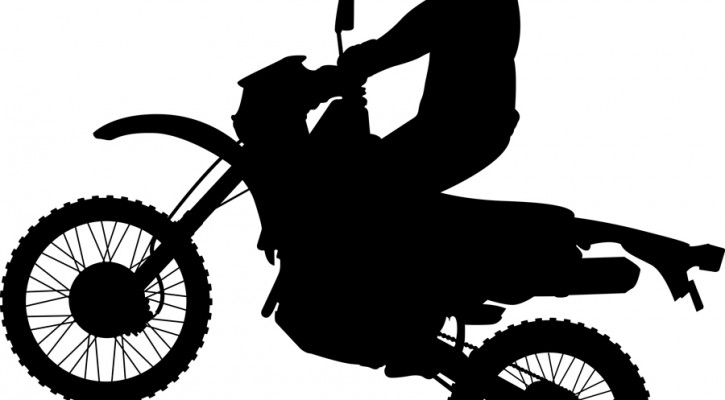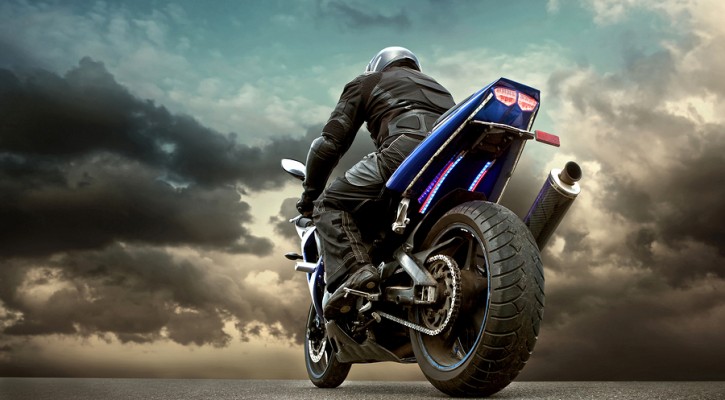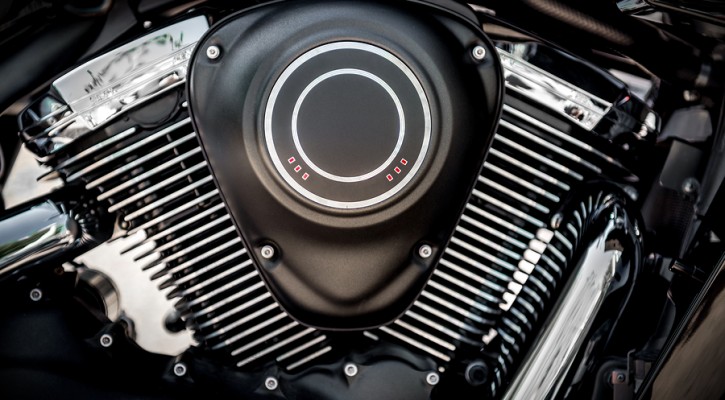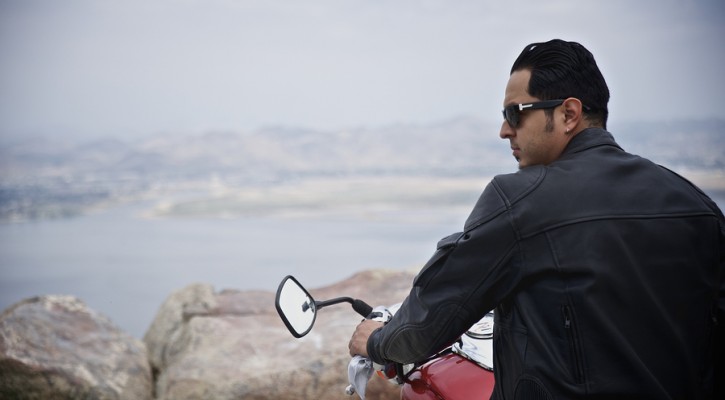
Bad Motorcycle Habits
April 23, 2015
Learn the bad motorcycle habits that cause the most motorcycle fails, and you just might make it through the first year without a dropped bike, broken bone or life-threatening injury.
Tunnel Vision
Don’t get lost in the tunnel. It’s easier than you might think. You’re cruising along with an itch for speed. You begin riding faster and faster, and you tend to focus farther and farther down the road. Pretty soon you’re travelling faster than your eyes can process, and all peripheral vision disappears. This is an incredibly dangerous situation.
Low Speed Incompetence
Many people are surprised to find out that they are terrible low speed riders. Having mastered moving at high speeds, they decided not to work on building that low speed confidence. However, it’s the low speed maneuvers that most often result minor motorcycle mishaps.
Riding Without Situational Awareness
Riding a motorcycle takes a finely-tuned mind. One must be constantly aware of their surroundings, seeing miles down the road while glancing peripherally and keeping mental notes about surroundings, road conditions and weather fluctuations. Without situational awareness, riders become road hazards.
Thinking You Know it All
The worst habit you could ever develop as a rider is developing a bad case of know-it-all-ism. No rider ever knows it all. Keep on learning, studying, and practicing. Mental agility is the key to riding safe.
Beat the Box!
April 17, 2015
“The Box” is one of the most feared exercises of the Basic Rider Course. It is an exercise that tests the will, the skills and the sanity of every new rider, and is often the most difficult part of the evaluation to pass.
This simple, yet sometimes frustrating exercise goes like this:
- A box is marked out measuring 20′ x 20′.
- Students are asked to enter the box and make two U-Turns without using their feet to stabilize the bike.
- Students jump right in the easy-looking exercise thinking it won’t be that hard.
- Students drop their bikes, lose their confidence, and often repeat the process all day long.
As frustrating as this exercise may be, it’s an essential skill that pulls together a lot of the techniques needed in every-day riding. So the question is, how exactly do you beat the box? This video does a great job of breaking it down for you:
Remember, there’s no time limit. There’s no rush and no reason to fuss. Just take a deep breath (and don’t forget to breath it back out!) and take it nice and slow. When you U-Turn, remember to turn your head as far as possible to see where you want to end up. Always look at where you want to go and the bike will do the rest for you.
The rest is just muscle memory. Learn how to use the friction zone and throttle to give yourself enough power to pull the bike around while making sure to counter-weight with your leg on the outside peg.
Once it clicks, you’ll wonder why it was ever so difficult to begin with. However, this is a technique that should be practiced at the beginning of each new riding season so that your muscle memory stays nice and sharp.
That’s how you beat the box!

Motorcycle Tips for Riding in the Wind
May 23, 2014
The weather has been a real nut job lately, and even when the sky is clear and the sun is shining the wind never seems to die. So, if you’re planning a cruise any time soon it would be wise to buff up on techniques for riding in the wind.
Wind is a normal part of riding. In fact, the act of riding a motorcycle is much like being in a constant wind tunnel. However, the wind presents fresh hazards for riders as well.
Dirt. When wind speeds are high, dust and dirt kick up off the ground and can sting if you’re not wearing proper motorcycle gear. So, always be prepared by wearing ATGATT (All The Gear All The Time).
Turbulence. High winds can also cause the bike to wobble a bit. Don’t panic and don’t overcompensate. Just remain calm and use basic riding knowledge to keep the center of the bike straight.
Insects. Windy days are dangerous for bugs, too. High winds can send swarms of bugs across busy highways, which is quite unpleasant for bikers without any face cover. Even with a visor, splattered bugs on your helmet can make visibility difficult. However, it’s nothing a little spit-shine can’t handle.
Wind is a nuisance, however, many bikers enjoy cruising through the countryside whether there’s wind or not. Just be remember to wear ATGATT and practice safe riding skills.
Hill Country Riding Tips
May 11, 2014
Hill country riding is an amazing experience. The lack of traffic, abundance of natural beauty, and back road bars and BBQ joints make it a trip well worth the mileage. However, there are a few road hazards to be aware of before taking off on your journey.
- Cell phone service. Never rely too much on a cell phone when riding through the hill country. Bring an old fashioned paper map and plan your route carefully.
- Wildlife. Always look out for wild animals, especially deer.
- Country drivers. On some back country roads, locals rarely see many tourists passing through and tend to drive with less caution. So, keep an eye out for lane-drifters.
- Gas. Be sure to fuel up before heading out, because some routes are seriously lacking in gas stations.
Motorcycle Ownership: A Beginners Guide
April 28, 2014
Want to taste the thrill and experience the freedom of motorcycle life? Well, before you head out to the dealership and buy yourself a two-wheeled freedom-machine, it’s best to learn the basics of motorcycle ownership. For a complete list of beginner’s tips, see the full story below:
A Proper Adventure Bike
April 24, 2014
Sometimes bigger isn’t always better… especially when looking for a little adventure. This article from autoevolution discusses the lack of proper adventure bikes – motorcycles built for both comfortable asphalt touring as well as good off-road handling. However, there seems to be some hope with Yamaha’s new concepts. See the full story here:
http://www.autoevolution.com/news/is-yamaha-bringing-back-proper-adventure-bikes-78056.html

Make Your Motorcycle Run Forever
April 22, 2014
When it comes to motorcycles, the AMA really knows their stuff. This article will let you find out the 12 tips to make your motorcycle run forever. See the full story here:
http://www.americanmotorcyclist.com/Riding/Street/Resources/TakingCare.aspx

Riding in the Rain
April 21, 2014
Spring weather is a fickle beast. One minute it’s beautiful and sunny, the next minute cold wind is whipping rain across the road. And, you’re stuck out in the middle of it. Well, knowledge and preparation is the cure for most things – including the rainy riding blues. So, have a look at these tips for a smooth ride no matter what the weather.
1. Get the right gear. Riding in a waterproof/water resistant jacket, pants, goggles (or a full face helmet), motorcycle boots and motorcycle gloves will make your life easier in any weather. This gear is not only designed to protect you in the event of a crash, but also to prevent the crash in the first place. Goggles and helmets improve visibility in the rain, especially those designed with anti-fog features. The water resistant jacket and pants will keep you dry, and the gloves and boots are made to prevent slipping when things get a little wet. By remembering ATGATT (All The Gear All The Time), you’ll always be prepared for a little rain.
2. Clear the fog. Helmets and goggles have a tendency to fog up in rainy weather. While some people have newer helmets built with better ventilation to prevent fogging, most of us will have to deal with the fog issue. There are anti-fog sprays available, as well as plenty of home remedies that can be useful, though neither are 100% effective. The best trick for those with full-face helmets is to leave the visor slightly open – by just a hair – to allow fresh air to circulate and keep the fog from forming. Or, there are also breath guard inserts that fit on the inside of your helmet to prevent your breath from fogging up the visor.
3. Watch the road. All smart riders keep a keen eye on the road no matter what the weather, however, rainy conditions call for even more vigilance. Look out for slick spots such as train tracks, man hole covers, metal grates on bridges, and painted road surfaces (lane markers, turn arrows, etc). If these road hazards can’t be avoided, then be sure to cross them slowly with straight wheels. Also, avoid rainbow-colored water like the plague. There is no pot of gold at the bottom of that puddle, just some some very slick oil.
4. Avoid puddles. All puddles should be avoided. There is no telling how deep they are, what is at the bottom, and how much oil they have collected from the road. If you have an uncontrollable urge to ride through a rain puddle, just save it for your bicycle.
5. Slow down! Obviously, everything should be slower in the rain. Brake slower, turn slower, ride slower.
As always, it’s important to remain relaxed and enjoy the ride. Getting all cramped up with fear won’t improve the situation any, and may even be detrimental to your safety. So, just keep these tips in mind, ride easy, and remember to have fun. After all, you’re still alive and riding!
Expect Trouble, Ride Easy
April 15, 2014
We’d all like to think that each motorcycle excursion will be incident-free. However, motorcycles are a risky bet if you ride unprepared. Here are a few riding tips to help you be ready for anything:
1. Always carry a tool kit. By packing a basic toolkit, no roadside breakdowns are going to get in the way of a fun ride.
2. Keep your owners manual handy. The owners manual and tool kit go hand-in-hand.
3. Tell others what route you are taking. By letting friends and family know when you leave and arrive, as well as your route, the chances of being found after a back-roads motorcycle crash will be much greater.
4. Keep emergency info easily accessible. This includes your current insurance, health insurance and emergency contact numbers.

Spring Has Sprung, Take a Practice Run
April 14, 2014
Each spring, motorcyclists fall victim to the highest crash rates of the year. A big factor in the crash statistics has to do with rusty motorcycle skills. All bikers, experienced and newbies alike, should take an easy-going practice run to help revive the muscle memory and mental skills it takes to ride safely.
There are plenty of fun places to hang out with friends and practice motorcycle skills. As a teenager, we had an abandoned airstrip nearby, or parking lots in front of closed businesses. Many racetracks open up their venues to the public for motorcycle safety classes, or just to take a practice run. There are also programs sponsored by dealerships, such as Harley Davidson’s new rider, boot camp, and skilled rider classes. Either way, be sure to refresh your riding skills each spring before hitting the highways.
